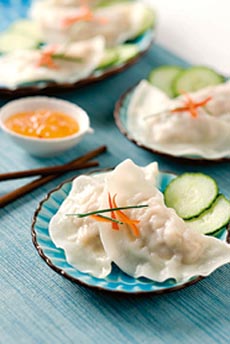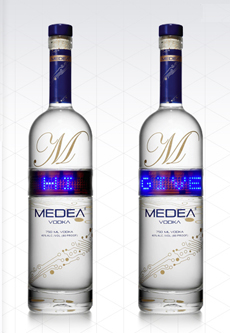|

[1] Rare cauliflower varieties: from top left, orange (Cheddar), Romanesco (Roman) and purple (photo © B. Sky | SXC. |
|
We have a passion for cauliflower. Steamed or stir-fried, crudités or cauliflower soup, we eat a head a week.
A member of the botanical family Brassicaceae, the cauliflower species, Brassica oleracea, also includes arugula, bok choy, broccoli, brussels sprouts, cabbage, collard greens, kale, horseradish, mizuna, mustard greens, radishes, rutabaga, turnips, wasabi, watercress and other vegetables.
In addition to being low in calories and high in fiber, vitamins and minerals, cauliflower and its cruciferous cousins have phytochemicals (a type of antioxidant) that are potential cancer-fighters.
Studies have shown their ability to stop the growth of cancer cells in the breast, cervix, colon, uterus, liver, lung and prostate. (Consume them raw or lightly steamed to get the maximum amount of antioxidants.)
“Cauli-fiori” was introduced to France from Italy in the 16th century. A delicacy, it was enjoyed by the wealthy.
When you take a bite, think of King Louis XIV tasting “chou-fleur” for the first time.
|
The name means “cabbage flower,” from the Latin caulis, cabbage. “Flower” refers to the edible head of florets (called curds by professionals), surrounded by leafy green leaves.
We’re thrilled when we find a rare species of cauliflower at farmers markets. Look for orange or Cheddar, purple and the majestic Romanesco/Roman broccoli. All look beautiful on a plate of crudités or combined into a tricolor cauliflower salad.
If you’re making conventional white cauliflower, here’s a simple chef’s trick to keep it white as snow: Add a little milk to the cooking water.
First Course: Dip raw or lightly-steamed cauliflower into fondue or salsa (warm the salsa if serving with warm cauliflower).
Hors d’Oeuvre/Snack: Skewer orange, purple and white cauliflowers and serve them with a dip. You can place the skewers in a round loaf of crusty bread, hollowed out in the center to hold the dip.
Side: Serve mashed cauliflower instead of mashed potatoes—veggie-avoiders can be tricked into eating it! Sprinkle with grated cheese, season with nutmeg or use your favorite spices.
Side: Roast cauliflower in the oven with root vegetables: carrots, parsnips, turnips—and baby onions.
Side: Make a cauliflower gratin with Parmesan or low-fat Cheddar cheese.
Side: A cauliflower curry is a spicy and colorful side dish.
Soup: Make some Cauliflower Cheddar Soup.
Soup: Want something more gourmet? Try Cauliflower Soup With Brown Butter & Paprika Croutons.
|




